Key takeaways:
- Grant rejections are opportunities for reflection and growth, emphasizing the importance of feedback in improving proposals.
- Children’s charities play a vital role in fostering hope and developing skills in vulnerable children, creating future leaders.
- Common reasons for grant rejections include lack of alignment with funder missions, vague objectives, and insufficient evidence of project necessity.
- Building collaborative relationships and tailoring applications to funder interests enhance the likelihood of success in securing grants.
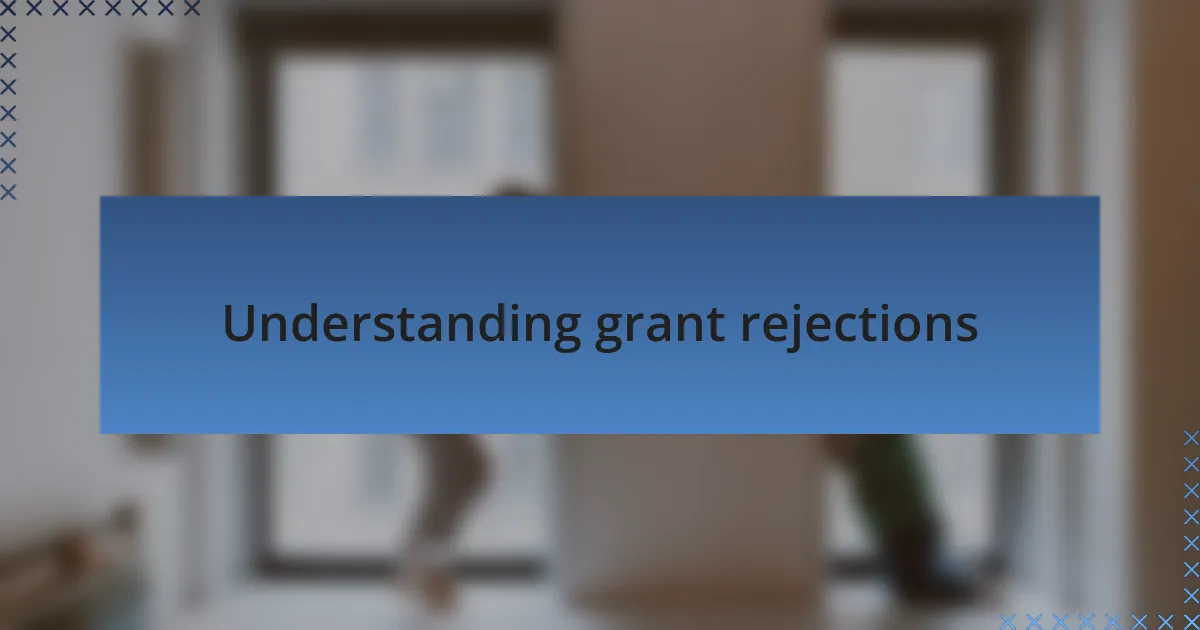
Understanding grant rejections
Understanding grant rejections can be challenging, but they often serve as crucial learning moments. I remember receiving my first rejection letter; I sat there feeling disheartened and questioning my worth. It was like a sudden pause button on all my hopes. But I soon realized that each rejection offered a unique opportunity for reflection and growth.
I found myself diving deep into the feedback provided, sometimes sparse but often packed with insights. Did they say my budget was unrealistic? Or perhaps my project lacked clarity? These moments became invaluable as they guided me to refine my proposals and understand the nuances of what funders truly seek. It’s all about evolving, right?
One of the most significant realizations I had was that rejection doesn’t equate to failure. In fact, every no brings you closer to the yes you’re after. It’s essential to remember that even the most successful organizations faced their share of rejections before finding their footing. How much stronger can a proposal become with every attempt? For me, each ‘no’ became a stepping stone to a more robust, impactful project.
Importance of children’s charities
Children’s charities play an essential role in shaping a brighter future for our youngest generations. I recall volunteering at a local charity event; the joy on the children’s faces as they received support was indescribable. It made me realize that these organizations do far more than provide resources; they foster hope and resilience in children who face adversity.
In my experience, children’s charities not only address immediate needs, such as food and education, but also help build lifelong skills. I once witnessed a mentorship program that transformed a shy, withdrawn child into a confident individual, eager to learn and grow. Can you imagine the ripple effect this has on their future? Investing in children today creates leaders and change-makers of tomorrow.
Moreover, supporting children’s charities fosters a sense of community and shared responsibility. At one fundraising dinner, I was struck by how many people cared passionately about children’s welfare; it reminded me how united we can be in pursuit of a common goal. As I reflect on these experiences, I realize that our collective efforts can indeed pave the way for a more equitable society where every child has a chance to thrive.

Common reasons for grant rejections
When applying for grants, one common pitfall is a lack of clear alignment with the funder’s mission. I remember crafting a proposal that I felt passionate about, only to realize later that the foundation’s focus was more on environmental issues rather than social welfare. It was a humbling lesson about the importance of thorough research and ensuring every aspect of the application resonates with the funder’s goals.
Another significant reason for rejections is poorly defined objectives and outcomes. In one instance, I submitted a plan that outlined ambitious goals but failed to provide specific, measurable outcomes. It hit me that funders want to see not only what we aim to achieve but also how we plan to judge our success. What good is a project without clear benchmarks?
Lastly, I’ve encountered applications rejected due to insufficient data or evidence supporting the need for our project. When submitting a proposal seeking funds for after-school programs, I underestimated the importance of robust statistics and testimonials from families benefitting from our services. It’s crucial to present compelling evidence to show that we truly understand the challenges at hand and are equipped to address them effectively. Have you ever felt that your passion alone isn’t enough to make a convincing case?
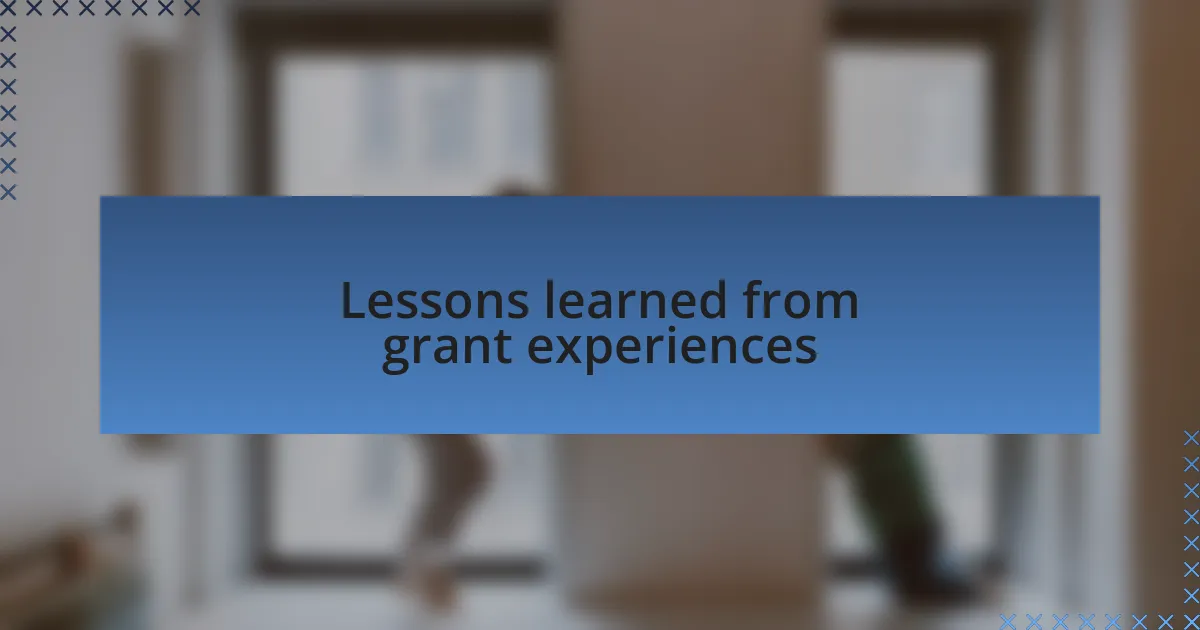
Lessons learned from grant experiences
In reflecting on my journey through grant applications, one key lesson stands out: the importance of storytelling. I once submitted a proposal that was backed by excellent data but lacked a compelling narrative. As I read the feedback, I realized that the reviewers wanted a connection to the people we aimed to help, not just numbers on a page. It felt disheartening initially, but it taught me that bringing a human element into our proposals can make all the difference. Have you ever thought about how stories can evoke empathy and drive support?
Another powerful lesson has been the value of feedback. After one particularly tough rejection, I reached out to the funder for insights on how I could improve. They were candid, sharing that my application lacked clarity in its goals. This conversation opened my eyes to the necessity of not just submitting proposals but also engaging with funders and seeking constructive criticism. It felt empowering to transform setbacks into learning opportunities, doesn’t it?
Lastly, I’ve come to appreciate the significance of persistence. There was a time when I was on the verge of giving up after several denials, but then I reminded myself of the children who depended on our programs. Each rejection was a stepping stone rather than a stumbling block. This mindset shift helped me approach subsequent applications with renewed vigor and creativity. Have you ever reflected on how resilience can fuel your passion and drive your mission forward?
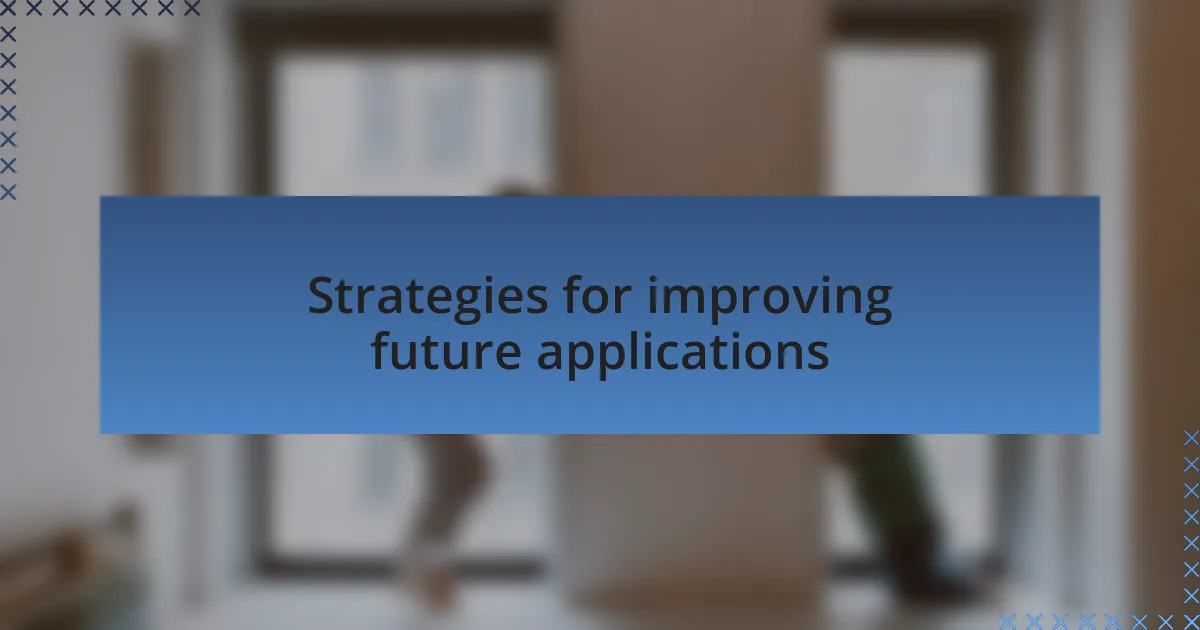
Strategies for improving future applications
One strategy that has truly helped me enhance future applications is to hone the clarity of our objectives. I remember a specific instance when a funder remarked that my goals felt vague. It was a wakeup call. I realized that if I was unclear about our mission, how could I expect funders to rally behind it? Now, I make it a priority to articulate our goals in direct and simple language, ensuring they resonate with both the evaluators and the communities we serve. Have you ever considered how precise wording can transform your message?
I’ve also learned the importance of tailoring each application to the specific funder’s interests. Many times, I submitted generic proposals, hoping they would fit the bill. However, after feedback from a funder who clearly articulated what they were looking for, I changed my approach. I now create customized narratives that align our projects with their priorities, making us more appealing as partners. How often do you think about the unique values of each funder when crafting your application?
Lastly, building collaborative relationships has proven invaluable. I found that including insights from teachers or parents who directly see the impact of our programs added depth to our applications. It not only strengthened our narrative but also established a sense of shared ownership over the project. This more inclusive approach engaged reviewers on a deeper level. Have you considered who else could add their perspective to your story?
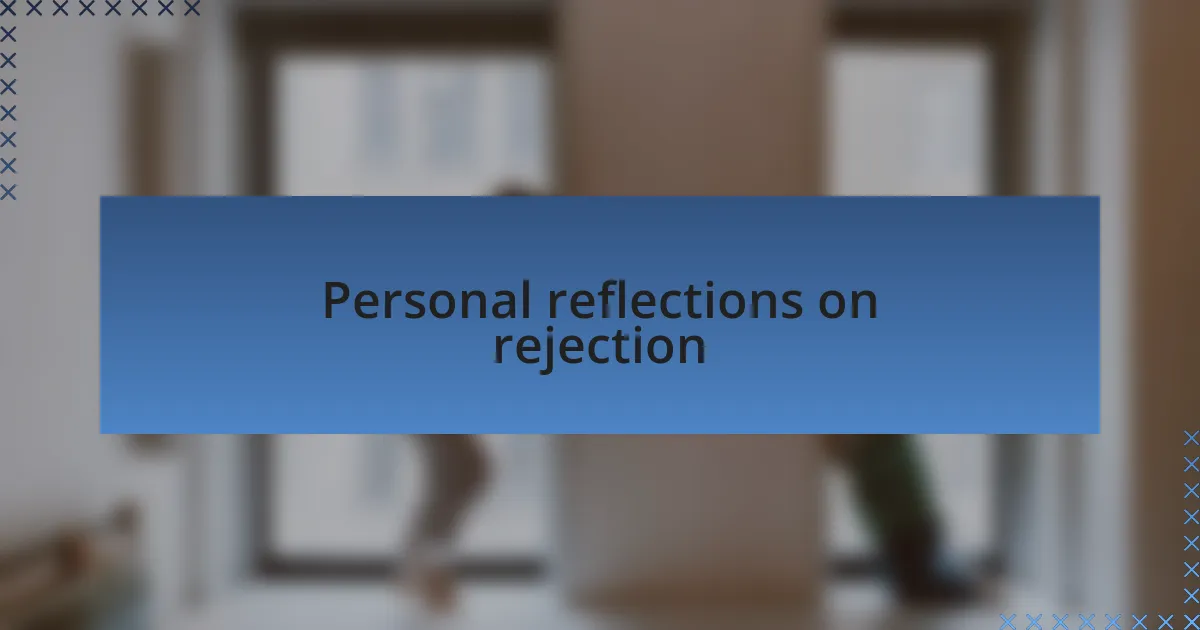
Personal reflections on rejection
Reflecting on rejection has been quite the journey for me. I remember my first significant grant denial; I felt a mix of disappointment and self-doubt. It was difficult not to take it personally. But as I sifted through that feeling, I discovered it was more about the fit than my worth as a leader. Hasn’t everyone felt a bit lost after hearing “no”?
Over time, I’ve come to see rejection as a teacher rather than a roadblock. Each response, though disheartening, nudged me to reevaluate our approach. I think back to one rejection where the feedback pointed out flaws I had been blind to. That moment shifted my perspective; it made me appreciate constructive criticism and spurred me on to improve. Isn’t it remarkable how a piece of negative feedback can transform into a stepping stone for growth?
Some of my most profound insights have emerged after taking a moment to breathe and reflect post-rejection. I learned to journal my thoughts, allowing me to process the emotional weight of the denial. In these quiet moments, I often found renewed clarity about our mission and purpose. Have you ever paused to allow yourself to feel those emotions and reflect? It’s a powerful exercise that has reshaped my outlook on future opportunities.
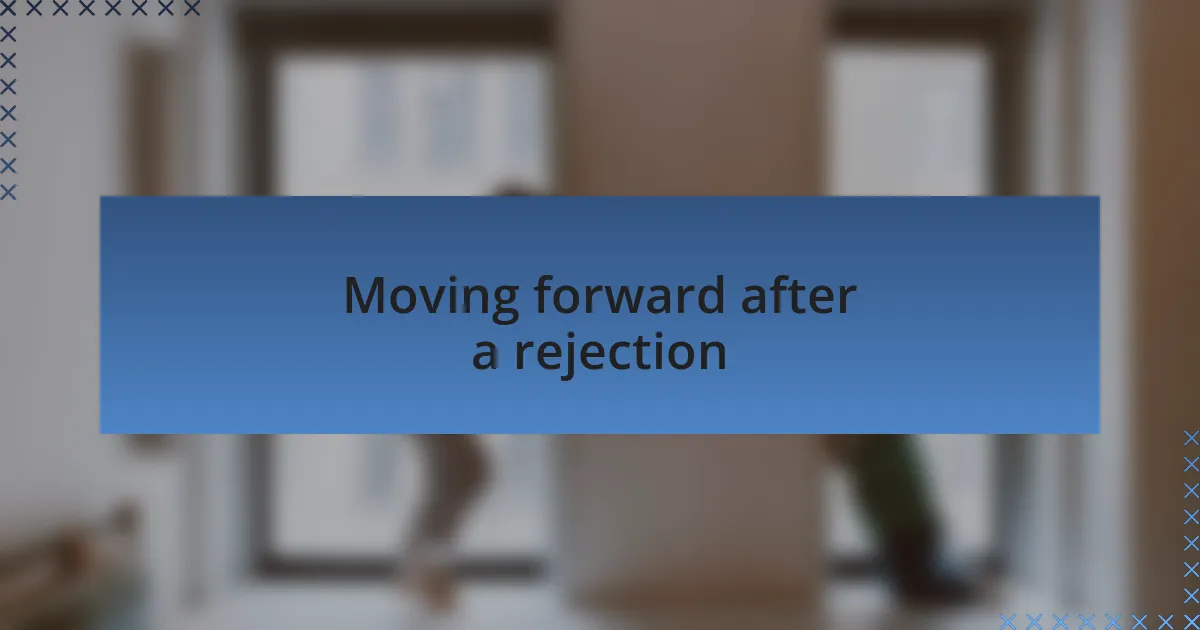
Moving forward after a rejection
Moving forward after a rejection is rarely easy, but I’ve learned to embrace it as an opportunity for change. I recall a time when a project I poured my heart into was turned down, and instead of wallowing, I gathered my team for a brainstorming session. That gathering transformed a disheartening experience into a creative workshop—how often do we miss out on innovative ideas just because we’re focused on disappointment?
In my journey, I’ve realized that every rejection offers a chance to refine our strategies. After one particularly tough rejection, I took a step back and re-evaluated our funding narrative. I began to ask, “What specifically didn’t resonate?” This reflection led to a powerful shift in how we communicated our mission. Hasn’t a small tweak ever opened up a new avenue for you?
Emotional resilience has also played a significant role in my journey forward. I began to view each “no” as a prompt to connect deeper with our community. Following a rejection, I often reached out to our supporters, gaining fresh perspectives while reinforcing those vital relationships. Isn’t it that personal connection that can reignite our passion and drive? This approach has not only helped me heal but has also fortified our foundation for future endeavors.